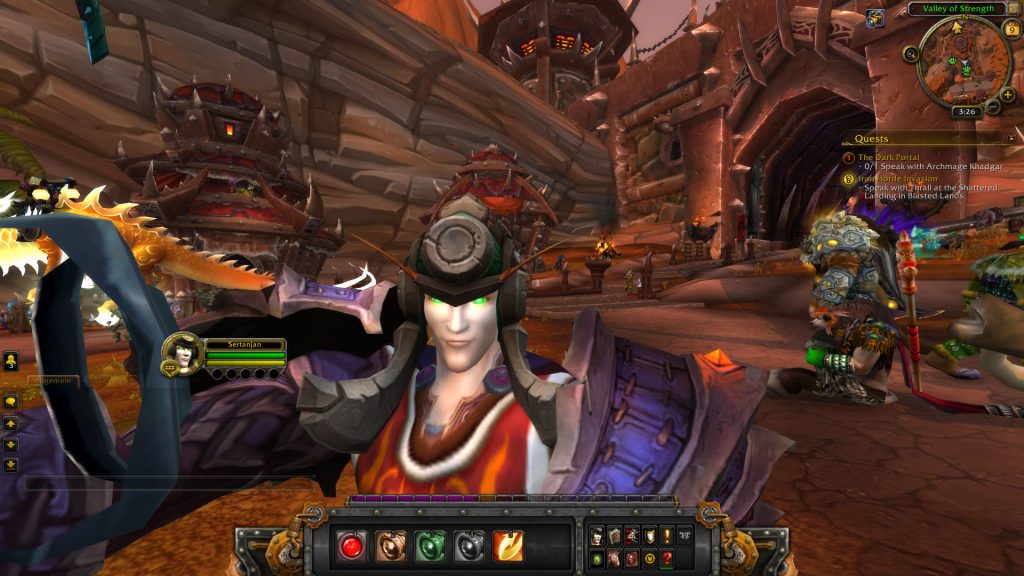Virtual Selfies
During my ongoing literature review I often discover interesting facts about things I’ve never thought about. Sometimes I can connect these facts with my own observations: The result is mostly a completely new idea why things are as they are. Maybe these ideas are new to you, too. Therefore I’ll share my new science based knowledge with you!
This week: This time, I think about the implementation of a selfie feature in World of Warcraft allowing players to take selfies of their avatars.
With the emergence and increased popularity of social media services, taking a selfie and sharing it with friends or even the entire world has become a popular activity in our society. In general, a selfie is a self-portrait photograph that is used to document a person’s activities or current appearance.

Taking a selfie in World of Warcraft
Interestingly, the activity of taking selfies also got implemented in World of Warcraft with the release of patch 6.1.0 (2015-02-24). The selfie feature allows players to document special moments of their avatars and to subsequently share the seflies with their friends or the entire community. For this purpose, the player’s camera angle gets changed to a frontal, face-focussed perspective normally used when taking a selfie. In addition, the avatar also stretches out one arm and holds an virtual camera in its hands thus mirroring the real world behavior. Finally, a selfie interface gets activated that allows a player to change between three different filters, to take a selfie or to cancel the activity and return to the normal third person perspective.
Although this feature merely is a gimmick, it potentially enhances the immersive effects of MMORPGs as players can develop a personal attachment to their avatars and even start to use them as a virtual representation of themselves inside of the virtual worlds. Thus, it is the player who directly experiences all the adventures and fights in the world of Azeroth. As a result, providing players with a function allowing them to take a selfie of them, i.e., their avatars, increases their attachment and even creates a connection to their real lifes as the resulting selfie-screenshot can be used and shared the same way as a normal selfie. In the end, by implementing real world activities in a virtual world, a convergence between the virtual and the real world is achieved which potentially accomplishes a higher believability, identification and presence.